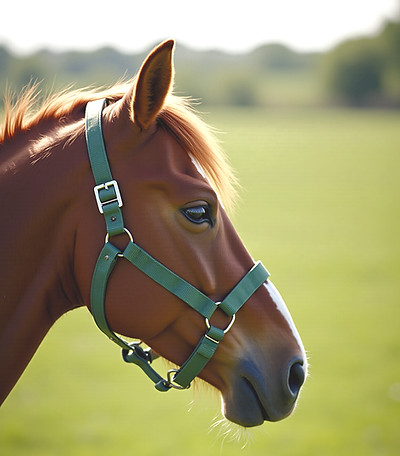
What is Equine Assisted Therapy?

MISSION
Equine Assisted Therapy (EAT) is a holistic approach that uses interactions with horses to promote emotional growth and healing. Under the guidance of an Equine Specialist (ES) working closely with a licensed mental health provider, clients engage in groundwork activities.
Building a relationship with the horse through handling, grooming, and groundwork exercises allows clients to connect deeply, fostering empathy and emotional awareness. Clients learn to read horse cues, mirroring human relationship dynamics and providing opportunities for self-reflection.
As trust develops, the horse often mirrors the client’s struggles, leading to emotional and psychological breakthroughs.
Effective for all ages, EAT is shown to reduce symptoms of anxiety, depression, and PTSD by addressing issues like trauma, emotional regulation, and social skills.
Practical Applications
E A P
EQUINE ASSISTED PSYCHOTHERAPY
Equine-Assisted Psychotherapy (EAP) integrates traditional psychotherapy techniques with equine interaction. Equine Specialists (ES) provide facilitated sessions where clients engage in activities with horses while exploring their feelings and behaviors. This approach is particularly effective for individuals dealing with trauma, anxiety, and depression, as the horse acts as a mirror, reflecting the client’s emotions and facilitating deeper self-awareness.
E A L
EQUINE ASSISTED LEARNING
Equine-Assisted Learning (EAL) focuses on personal development and life skills rather than clinical therapy. In EAL, clients participate in structured activities with horses that promote teamwork, communication, and problem-solving. This method is particularly beneficial for at-risk youth and those seeking to build confidence and social skills. This interaction not only enhances their own understanding of non-verbal cues, but also promotes empathy and compassion, which are essential for building healthy relationships.
EAGT
EQUINE-ASSISTED GRIEF THERAPY
Equine-Assisted Grief Therapy (EAGT) focuses on helping individuals process loss and grief. This approach allows clients to express their emotions in a safe environment, where the horse’s non-judgmental presence provides comfort and support. Their presence can reduce anxiety, promote mindfulness, and create space for symbolic exploration of loss, making it especially effective for individuals who feel stuck or overwhelmed by their grief.

Equine Specialists (ES) guide clients through various activities that facilitate discussion, helping them to find closure and healing. EAGT can be particularly beneficial for those not only dealing with the death of a loved one, but also divorce, or other significant life changes, as it promotes emotional release and resilience.
As a counselor, integrating EAGT into your program can deepen therapeutic outcomes and offer clients an additional transformative path toward healing.
UNDERSTANDING THE FOUNDATIONS
ATTACHMENT THERAPY
Equine Assisted Therapy (EAT) integrates the Attachment Theory, which posits that the bonds formed between individuals. These bonds are crucial for emotional well-being. Horses, as non-judgmental beings, help clients establish secure attachments, thereby facilitating emotional healing. Since the presence of a horse evokes feelings of safety and trust, clients are allowed to explore their emotions more freely and openly.
EXPERIENTIAL THERAPY
The dynamic nature of equine interactions encourages clients to remain present—an essential component of experiential therapeutic modalities. EAT provides a unique opportunity for clients to engage with horses in a way that fosters emotional expression. While interacting with these animals, clients confront and process their feelings, leading to deeper insights and personal growth. This is the importance of experiencing emotions in the moment.

COGNITIVE BEHAVIORAL THERAPY
Cognitive Behavioral Therapy (CBT) also plays a significant role in EAT. In the context of EAT, Equine Specialists (ES) help clients recognize and challenge negative thought patterns through their interactions with the horse.
-
Horses are masters of non-verbal communication. They respond to human emotions and body language with remarkable sensitivity.
-
Participants learn to regulate their own energy and presence, which translates into better interpersonal skills outside the therapy setting.
-
This mutual feedback loop between human and horse nurtures patience, trust, and emotional growth.
MINDFULNESS
Mindfulness is the importance of experiencing emotions in the moment. EAT provides a unique opportunity for clients to engage with horses in a way that fosters emotional expression. By interacting with these animals, clients confront and process their feelings, leading to deeper insights and personal growth. The dynamic nature of equine interactions encourages clients to be present, which is a key element in experiential therapeutic modalities.

NEUROBIOLOGICAL RESPONSES

Engaging with horses in EAT triggers significant neurological and physiological changes….
EAT directly influences the brain and nervous system through neurobiological responses. Interactions with horses trigger the release of hormones like oxytocin, often called the “love” or “bonding” hormone. The gentle touch of grooming a horse, or the feeling of connection during groundwork, can stimulate oxytocin release, which helps to reduce stress, promote feelings of trust, and build a sense of security.
EAT has been shown to significantly decrease levels of cortisol, the body’s primary stress hormone. A lower cortisol level helps calm the nervous system, allowing for a state of relaxation and an improved capacity to process emotions.
The pleasant and rewarding experience of a successful interaction with a horse can lead to an increase in serotonin and dopamine.
These neurotransmitters are crucial for regulating mood, motivation, and feelings of pleasure, helping to combat symptoms of depression and anxiety.
The calming presence of a horse and the rhythmic, mindful activities involved in EAT (like grooming or walking alongside a horse) can activate the vagus nerve. This activation helps to regulate the nervous system, shifting the body from a state of “fight, flight, or freeze” (often a symptom of trauma or PTSD) to one of calm and safety.
The horse’s naturally calm and grounded state can help a client’s nervous system co-regulate, a process where the client’s body begins to mirror the horse’s relaxed physiological state, leading to a tangible sense of peace and stability.
Furthermore, EAT promotes neuroplasticity, the brain’s ability to reorganize itself. This is seen through the activation of mirror neurons, which help clients become more aware of their emotions, and increased activity in the prefrontal cortex, which enhances emotional regulation and decision-making.
THE HUMAN–ANIMAL BOND
The human-animal bond is a fundamental component of Equine Assisted Therapy (EAT). In this context, the relationship a client forms with a horse is not a side effect, but a central mechanism of healing. This bond is unique because horses offer a powerful, non-judgmental, and reciprocal relationship that can be less intimidating and complex than human-to-human relationships.
The Bond as a Foundation for Trust
For many clients, particularly those with a history of trauma, neglect, or attachment issues, forming trust with a person can be incredibly difficult. A horse, as a prey animal, is naturally
sensitive to its environment and a person’s emotional state, but it doesn’t carry the baggage or social complexities of human interaction. A horse’s trust is earned through clear communication, consistency, and respect, offering a safe and predictable environment for a person to practice building a healthy relationship. The client learns that their actions have a direct and understandable impact on the horse, creating a powerful feedback loop that rebuilds a sense of self-worth and the ability to trust.

TARGET POPULATIONS
1. CHILDREN AND ADOLESCENTS
Equine Assisted Therapy (EAT) can be highly effective for children by offering a non-traditional, experiential approach to address a wide range of mental, emotional, and physical challenges. The unique relationship with horses, combined with structured activities, creates a powerful environment for growth.
The tactile experience of grooming, the rhythmic motion of walking alongside a horse, and the fresh air of the outdoor environment provide rich sensory input. This can be particularly beneficial for children with conditions like autism spectrum disorder, helping to regulate their nervous systems and reduce sensory sensitivities.

2. ADULTS
EAT takes place in a natural, outdoor environment, which in itself can be calming. The structured, mindful activities involved with EAT—such as grooming, leading, or simply observing the horse—force a person to focus on the present moment. This can be highly effective in reducing the worry and rumination associated with anxiety and depression.
Horses are highly sensitive to a person’s emotions and body language, and they provide immediate, non-judgemental feedback. If a person is anxious, the horse may become restless. If they are calm and assertive, the horse will respond accordingly. This mirroring effect helps clients develop emotional regulation skills and impulse control, as they quickly learn that managing their own emotions is necessary to achieve a desired outcome with the horse. This is a crucial skill for dealing with drug addictions, which is often triggered by an inability to cope with intense emotions or cravings.



3. Special Needs
Equine-Assisted Therapy (EAT) provides significant cognitive and communication benefits for people with special needs. Helps improve focus and organizational skills through activities like grooming and obstacle courses. Non-verbal communication with horses teaches people to interpret body language and express themselves more clearly. Cognitive gains are supported by social and emotional benefits, as working with horses builds cooperation and turn-taking. Successfully completing tasks builds self-esteem and confidence. The tactile and rhythmic sensory input from riding, along with the natural outdoor setting, helps with sensory regulation.

4. VETERANS
Horses are prey animals, making them highly attuned to their environment and a person’s emotional state. This makes them excellent partners for adults with a history of trauma or PTSD. A horse’s sensitive nature provides immediate, non-judgmental feedback to a person’s body language and energy. An adult who is hypervigilant or stuck in a “fight, flight, or freeze” response can see their internal state mirrored in the horse’s behavior, which creates a safe opportunity to practice emotional regulation and regain a sense of control. The process of building trust with a horse can help a person re-learn how to form healthy, safe relationships with others.



MEASURING OUTCOME AND EFFECTIVENESS
Evaluating client progress is vital in Equine-Assisted Therapy (EAT) to ensure therapeutic goals are met. Equine Specialists (ES) systematically assess emotional and behavioral changes, using these insights to refine their approach. Progress notes and structured assessments are key. These tools, including standardized assessments, allow for documentation of observable and quantifiable changes in client behavior, feelings, and interactions, offering a comprehensive view of progress. These observations allow the equine specialist (ES) to tailor interventions more effectively.
Client feedback is equally important. Encouraging clients to reflect on their experiences provides valuable insight into their growth and areas needing more attention. This fosters open communication and strengthens the therapeutic alliance. Goal-setting, especially using SMART goals, is essential. Collaboratively establishing and regularly revisiting these goals provides a clear roadmap, maintaining client focus and allowing for dynamic adjustment based on their experiences with the horses.
Finally, the horse’s role in evaluation is crucial. Their reactions often mirror a client’s emotional state, offering insights into mental health and progress.


THE EQUINE SPECIALIST (ES)
An Equine Specialist (ES) possesses specific skills. Understanding the dynamics of human-animal interaction is essential. This includes recognizing the horse’s behavior, as well as being attuned to the emotional responses of clients in the presence of these large animals. Such awareness not only enhances the therapeutic process but also ensures the safety and wellbeing of both clients and horses involved.
Another vital skill of the ES is the ability to establish trust and rapport with clients.
This requires excellent communication skills, empathy and the ability to be present with clients as they navigate their experience alongside the horses.
Since Equine-Assisted Therapy involves clients confronting emotional challenges in a non-traditional setting, the Equine Specialist (ES) must create a safe space where clients feel comfortable expressing their feelings and experiences.
